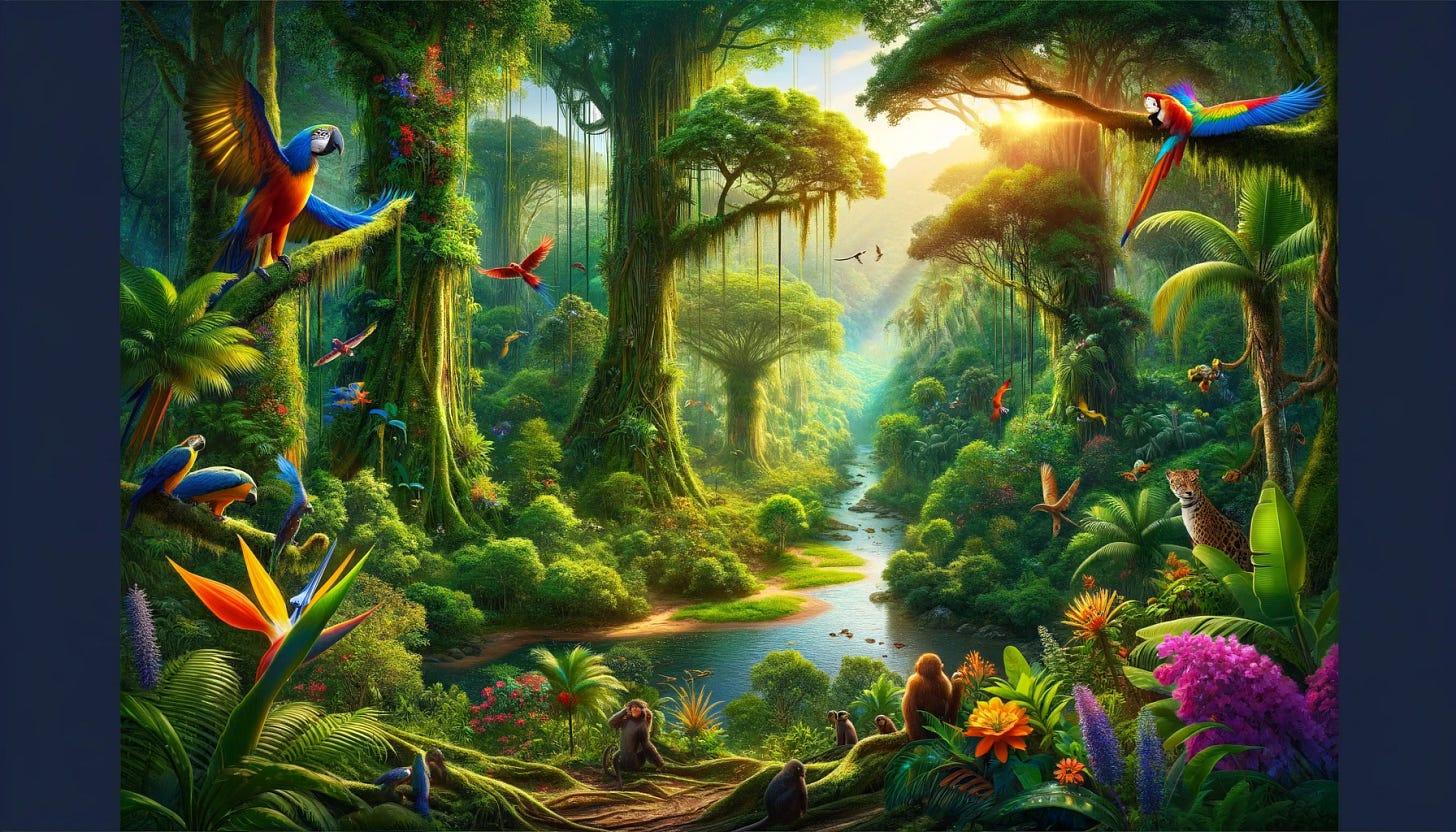Trees as a Symbol of Life
Franklin D. Roosevelt "A nation that destroys its soils destroys itself. Forests are the lungs of our land, purifying the air and giving fresh strength to our people."
"He who plants a tree plants hope." Lucy Larcom
"The creation of a thousand forests is in one acorn." Ralph Waldo Emerson.
"Between every two pines, is a doorway to a new world." John Muir
"Trees are the earth's endless effort to speak to the listening heaven." Rabindranath Tagore.
"I said to the almond tree, 'Friend, speak to me of God,' and the almond tree blossomed." Nikos Kazantzakis
Trees, with their universal language that transcends cultures and religions, have always been vital to the ecosystem and humanity's imagination. Their significant symbolism and practical importance foster a sense of connection and engagement worldwide, making us all part of a global effort to preserve and understand these magnificent beings.
Beyond their symbolic significance, trees play a crucial role in the environment. They provide many benefits, including oxygen production through photosynthesis, essential for life. Additionally, they absorb carbon dioxide, a significant greenhouse gas, helping mitigate climate change by reducing its atmospheric concentration.
Trees also act as natural air filters, trapping dust, pollen, and other pollutants, improving air quality. They provide shade and cool the air through transpiration, which helps moderate temperatures in urban areas. This cooling effect can reduce the need for air conditioning, leading to energy savings.
Trees' root systems stabilize the soil, preventing erosion and reducing the risk of landslides. Trees also play a crucial role in the water cycle by absorbing rainwater, reducing runoff, and replenishing groundwater supplies. They create habitats for diverse wildlife, supporting biodiversity and maintaining healthy ecosystems.
Symbolic Significance of Trees:
The saying "the tree of knowledge" refers to a metaphorical or symbolic representation of the pursuit and acquisition of knowledge and wisdom. The tree of knowledge of good and evil is central to the story of Adam and Eve in the Garden of Eden. In this context, the tree represents the boundary between innocence and awareness, and eating its fruit signifies transforming ignorance into enlightenment.
Buddha and the tree refer to the story of Siddhartha Gautama, who later became known as the Buddha, attaining enlightenment under the Bodhi tree. This event is a central and significant moment in Buddhist tradition. According to the story, Siddhartha had renounced his princely life. He spent years searching for spiritual truth and liberation from the cycle of birth, death, and rebirth.
After years of seeking and practicing extreme asceticism, Siddhartha meditated under a large fig tree, later known as the Bodhi tree, in Bodh Gaya, India. He vowed to rise once he had attained enlightenment. Under this tree, through deep meditation and inner reflection, Siddhartha reached a profound understanding and enlightenment. He realized the Four Noble Truths and the Eightfold Path, the foundations of Buddhist teachings.
Thus, the Bodhi tree symbolizes enlightenment, wisdom, and the pursuit of spiritual awakening. It represents the place where Siddhartha achieved his transformation into the Buddha, the enlightened one, and where he discovered the principles that would guide his teachings. This story underscores the importance of perseverance, meditation, and inner reflection in pursuing spiritual enlightenment.
The 'Tree of Immortality' concept recurs in many religions, symbolizing eternal life and faith in a divine afterlife.
Trees are often mythologized as fundamental elements that fuel life and existence. The Bible's Tree of Knowledge in the Garden of Eden represents wisdom and delicious temptation. It is often considered the very first tree of symbolic meaning to enter human consciousness.
This tree, along with the 'Tree of Life,' plays a crucial role in the story of Adam and Eve, symbolizing the duality of human nature and the choices we make between good and evil.
Fairy Tales:
Trees often hold symbolic meanings in fairy tales and play crucial roles in the narrative. They can represent life, growth, and a connection to nature. They can also represent magical elements influencing the story. Trees frequently act as settings for significant events, sources of wisdom, or barriers and challenges for the characters.
"Hansel and Gretel" portrays the forest as dangerous and abandoned. Yet, it also becomes a place of transformation and resourcefulness for the siblings. The dense forest symbolizes the unknown and the characters' journey through hardship.
The forest is a refuge for Snow White when she flees from her stepmother. The trees provide shelter and protection, allowing her to find safety and eventually encounter the seven dwarfs who help her.
The fairy tale of Sleeping Beauty unfolds with the thorny briar hedge around the castle expertly crafted from trees and plants. The barrier represents time's passage and the enchanted sleep's preservation until true love can break the curse.
The trees form part of the magical underground realm in "The Twelve Dancing Princesses." The princesses go there to dance every night, and the trees in this hidden world add to the enchantment and mystery of their nightly excursions.
In "Jack and the Beanstalk," the beanstalk itself is a giant plant that Jack climbs to reach the land of the giants. While not a tree in the traditional sense, the beanstalk functions similarly by connecting different worlds and enabling Jack's adventure.
These examples illustrate how fairy tale trees often embody themes of mystery, transformation, protection, and the connection between different realms or stages of a character's journey. They enrich the stories by adding layers of meaning and enhancing the magical atmosphere. And trees and forests are a central part of these tales.






